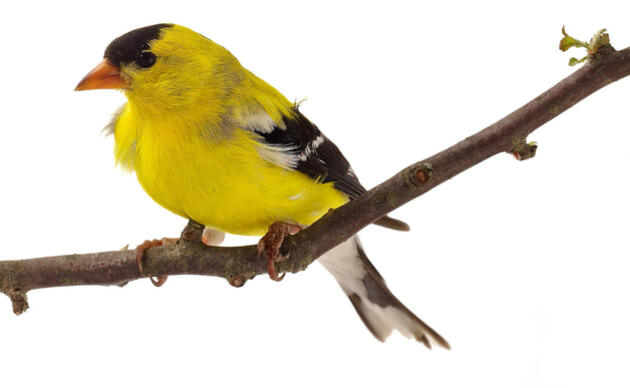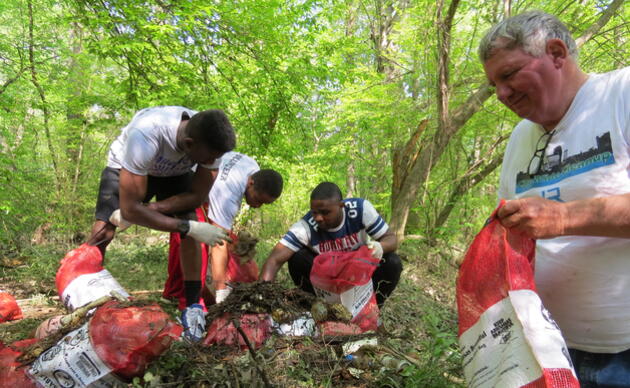By Richard Burgess. Orginially published by The Advocate.
Hurricane Rita battered coastal Vermilion Parish 10 years ago, drowning the landscape with a churning storm surge that pulled and tugged at the fragile marsh.
Then Hurricane Ike hit three years later.
The one-two punch destroyed homes, businesses and infrastructure in southwest Louisiana.
Less noticeable is the legacy in the coastal marshes, which is prime habitat for millions of birds that go there to nest or rest.
“Forty percent of the migratory birds in North America spend part of their life cycle here in Louisiana,” Audubon Louisiana Executive Director Douglas Meffert said. “These lands are very special for birds and have been for centuries.”
The National Audubon Society, with its long history of bird-focused conservation work, recognized the importance of southwest Louisiana’s coast early on, establishing the Paul J. Rainey Wildlife Sanctuary in 1924.
The 26,000-acre tract in coastal Vermilion Parish is the conservation group’s oldest and largest sanctuary, and Audubon staff are still working there years after Rita and Ike to rebuild the hurricane-ravaged marsh using methods they hope will serve as an example for private landowners fighting coastal erosion with few resources.
The Rainey sanctuary, like all of coastal Louisiana, has land-loss challenges far greater than hurricanes — the legacy of years of sinking land, rising seas, a maze of canals slicing up the marsh and big levees preventing rivers from spreading sediment over the landscape to rebuild what washes away.
But the back-to-back storms in 2005 and 2008 didn’t help.
“It got into the fragmented marsh and broke it up even more,” said Karen Westphal, coastal project manager for Audubon Louisiana.
The Rainey sanctuary provides habitat for some 200 species of birds.
Endangered piping plovers spend winters on a stretch of beach there.
Whooping cranes, one of the rarest and largest birds in the world, have visited in recent years, flying over from the nearby state-owned White Lake Wetlands Conservation Area, where a project is underway to reintroduce the endangered birds to Louisiana.
Some birds come to the sanctuary from farther north to nest for the winter along the warm Louisiana coast. Others are passing through, resting their wings after flying hundreds of miles across the Gulf of Mexico from Central and South America, or eating their fill in preparation for the long trip back.
“It’s like loading your gas tank to go on a 500-mile journey,” Meffert said.
The marsh provides protection and sustenance, and if it disappears, those birds could be in trouble.
“You get to the tipping point where there isn’t enough to support the migratory birds,” Meffert said.
At Audubon, the team has been working on two basic restoration strategies since the storms — repairing the damage done and figuring out how best to stop future losses.
They hope their work will serve as a model for small private landowners who can’t plug into major government-funded coastal restoration efforts.
“It’s a living laboratory for all these types of restoration projects,” Meffert said.
The impact of one of those projects can be seen in a section of sanctuary marsh ripped apart by Rita and Ike.
The Audubon staff in 2011 began using a small dredging machine to suck up sediment from a canal and then pump it through a pipe to fill in an acre-size mud hole left behind by the storms.
Four years later, the hole looks like marsh again and, it is hoped, will help stabilize the surrounding land.
The dredging machine sits on a pontoon barge not much bigger than a flat-bottom boat, and the whole operation — running the dredge, moving around the pipe — can be done by two people, Westphal said.
It would be a feasible and affordable project for a small landowner, Meffert said, and the Audubon Society is continuing to explore small-scale dredging with a more extensive project to restore from 5 to 10 acres of marsh.
While repairing damage is one strategy, the conservation group also is working to keep what it has, using lessons learned from Rita and Ike.
In 2004, the society began a project to build up strips of high ground in one area of the sanctuary by using dirt scooped from the bottom of the marsh to build terraces amid expanses of open water.
The next year, workers planted the terraces with new vegetation, finishing up just a few months before Rita hit.
“After Rita, (the terraces) were here in just about the same condition,” Westphal said.
Other areas of the sanctuary didn’t fare so well, but in the next storm, they might.
The terracing project is now expanding, and during a tour of the area last week, sanctuary manager Timmy Vincent stood by an airboat atop a strip of solid ground covered with smooth cordgrass, flatsedge and other marsh plants — a barrier of sorts to tame the waves and turbulence eating away at the marsh.
Terracing is not new in coastal restoration, but what’s unusual is how the project came about.
The new terraces are not in the sanctuary but rather on adjacent property owned by E.A. McIlhenny Enterprises, one of the three private landowners Audubon joined forces with a few years ago to leverage their collective voice and resources in what’s called the Rainey Conservation Alliance.
“We are treating it as one piece of marsh,” Vincent said.
Birds and other wildlife could not care less where a property boundary is, Meffert said, so why should landowners if the concern is saving wetlands?
The alliance also offers a model for other small-scale coastal landowners who, working alone, might never attract any significant restoration projects.
“Five acres might not sound like a lot to the federal government, but if it’s your 5 acres, it means a lot,” Meffert said.
Donate to Audubon Delta's Work
Help secure the future for birds at risk from climate change, habitat loss and other threats. Your support will power our science, education, advocacy and on-the-ground conservation efforts.




